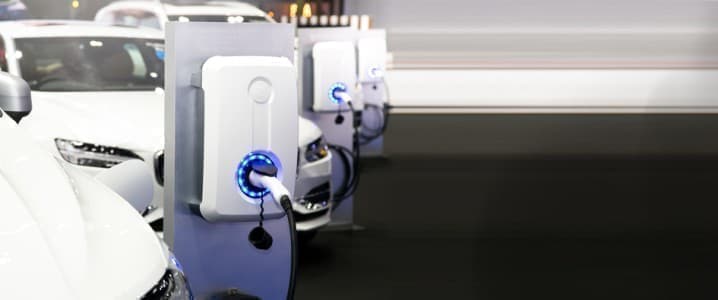As most major players and many new startups venture into the world of electric vehicles (EVs), many are racing to develop a solid-state battery that could vastly improve performance and safety. Companies worldwide are investing heavily in the technology needed to develop this type of battery in the hope they will be able to offer the EV with the most efficient battery on the market.
As governments worldwide plan for the introduction of bans on internal combustion engine (ICE) vehicles, many automakers are investing heavily in the rapid development of EV models. In the U.K. and Europe, there are bans on the sale of new ICE cars from 2035, which is encouraging many consumers to switch to electric battery-powered alternatives so as not to be caught out. This will soon become the norm. However, many consumers are still reluctant to make the switch as they wait for producers to develop technologies to improve the range and performance of their EVs to become more competitive with ICE vehicles. A poll conducted by Reuters in March showed that 35 percent of people surveyed in the U.S. wanted EVs to have a range of 500 miles or more, far higher than most currently offer.
One of the many ways in which automakers are looking to improve their EVs is through the development of a solid-state battery. At present, most companies are using lithium batteries to power their vehicles, which can be recharged through a mains electric connection to keep the car running. Lithium batteries use a liquid electrolyte solution that allows lithium ions to move around to make the battery work. In contrast, a solid-state battery would use a solid – rather than liquid – electrolyte. Making this switch would allow automakers to scrap the heavy separator component required to keep the positive electrode from coming into contact with the negative electrode.
Solid-state batteries are regarded as safer as they do not need the flammable liquid that is required in traditional lithium-ion batteries, reducing the risk of fire. They are also lighter than traditional batteries and require a shorter charging time. These batteries are expected to vastly improve the performance of EVs, allowing them to run over longer distances. However, there are some drawbacks. While solid-state batteries may perform better, their lifespan may be shorter, as they can eventually form cracks and need replacing.
Producers also worry about the production costs involved with solid-state batteries and how much consumers will be willing to pay for vehicles using the new technology. These types of batteries are in the nascent stage of production and are likely to appeal to a niche market upon their initial release. The small production means that costs will likely be elevated. However, if successful, the widescale rollout of solid-state batteries could lead to mass production, which will drive down costs, as we have seen with lithium-ion batteries.
Several major automakers have announced that they are developing solid-state batteries in recent years. In July, Toyota announced a breakthrough in its technology, stating that it has simplified the production process for materials required for manufacturing. The new technology will enable it to halve the size, cost, and weight of EV batteries. Toyota has been developing the technology since 2012 and now has over 1,100 solid-state battery patents, more than any other carmaker. It expects to launch its first solid-state battery EVs as early as 2027 and claims its new battery could provide a range of 745 miles and a charging time of just 10 minutes. In contrast, the Tesla Supercharger network, the largest of its kind at present, offers 199 miles of charge in 15 minutes.
In a bid to develop the technology, Volkswagen has become the biggest shareholder in QuantamScape. Similarly, Mercedes Benz announced that it is partnering with Prologium, a Taiwanese producer of solid-state batteries. Meanwhile, China, which is leading the world’s battery production market, believes it has found a cheaper way to develop solid-state batteries. This supports the country’s aim of becoming a major low-cost EV producer, with many new Chinese automakers already undercutting much of the global competition when it comes to price.
However, while many are optimistic about the technology, some are more cautious. In October, Jim Rowan, the CEO of Volvo Cars, stated, “My personal opinion is that solid-state is still some years off, but of course, we’re involved in the research and development around that.” So, while solid-state batteries could be widely used in the future, it could take a decade or longer for them to be used in mainstream EV production.
There is great hope for the development of the technology required to make solid-state EV batteries a reality in the near future. However, as with lithium-ion batteries, it will likely be years until the technology becomes mainstream, with most producers sticking with the batteries they know until solid-state options are tried and tested.
By Felicity Bradstock for Oilprice.com
More Top Reads From Oilprice.com:
- Africa’s Geothermal Power Sector Set To Overtake Europe
- Will Petrochemicals Continue To Drive Oil Demand?
- America’s Offshore Wind Industry Is A Mess



















Moreover, growth in EV sales thus far has been supported by significant government subsidies. Sales would slump once the subsidies are withdrawn.
EVs’ future is anchored in one claim: no emissions. While an EV doesn’t emit any CO2 emissions, far bigger emissions are emitted in the mining for the metals and lithium used in its manufacturing and also the eventual disposal of its batteries at the end of their shelf life than in ICEs.
EVs are going to face an uphill battle against ICEs. And while they are bound to get a share of the global transport system, they will never
Prevail over the ICEs.
Dr Mamdouh G Salameh
International Oil Economist
Global Energy Expert